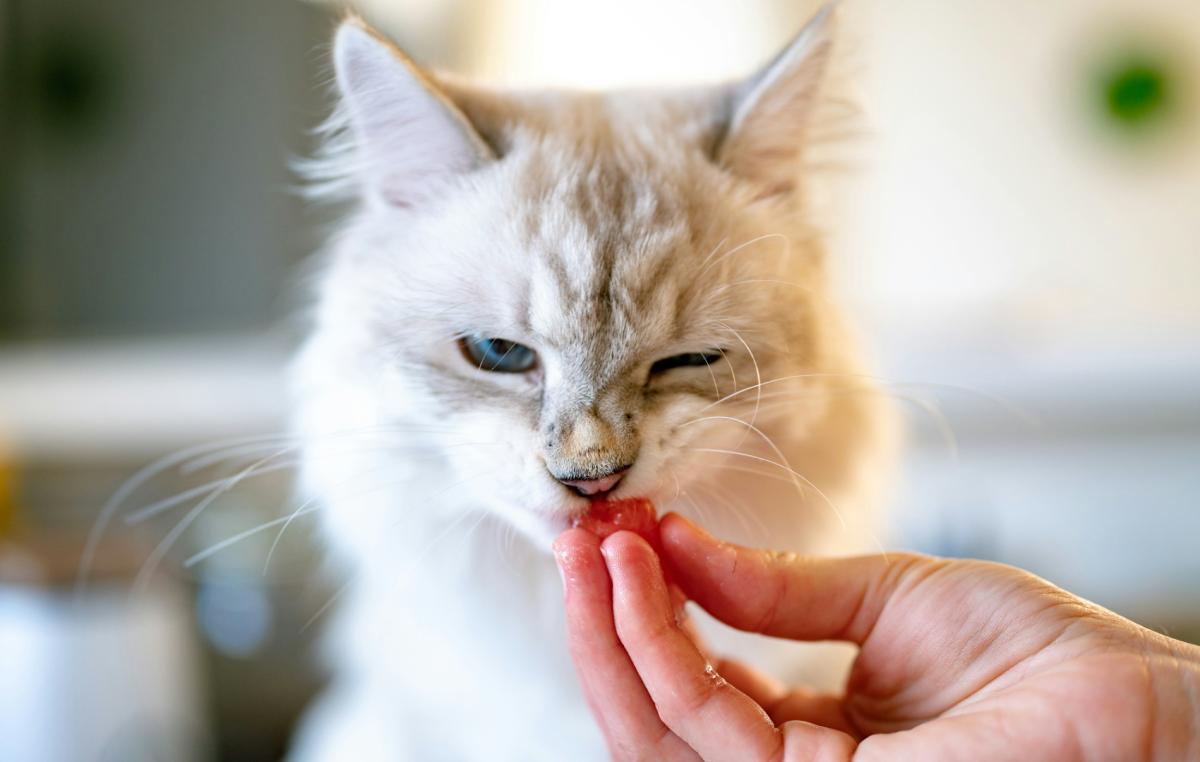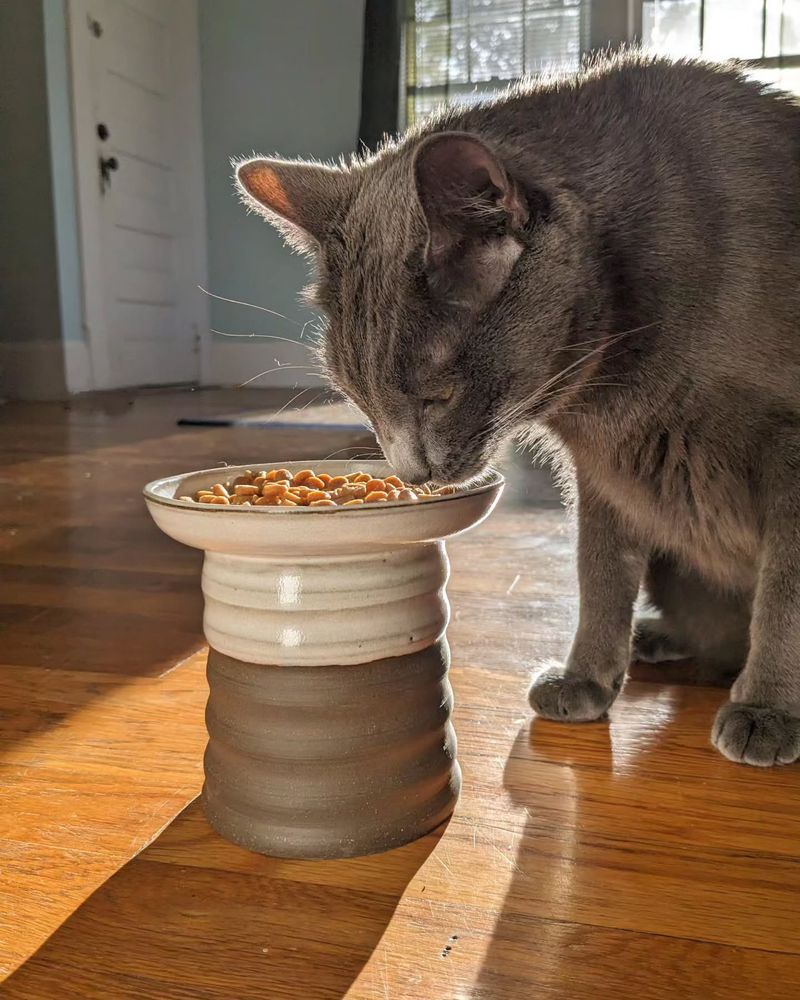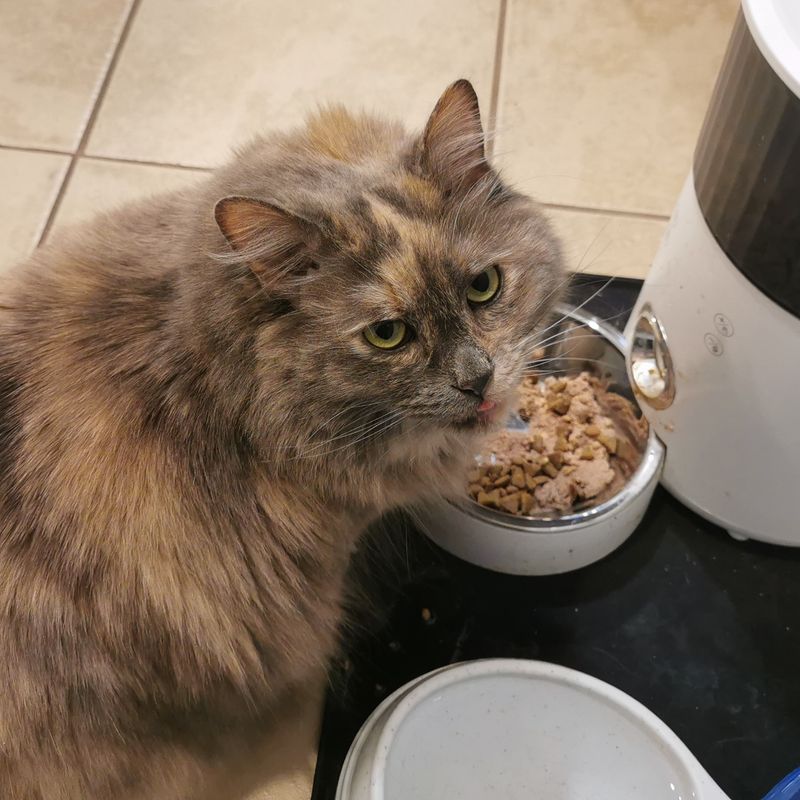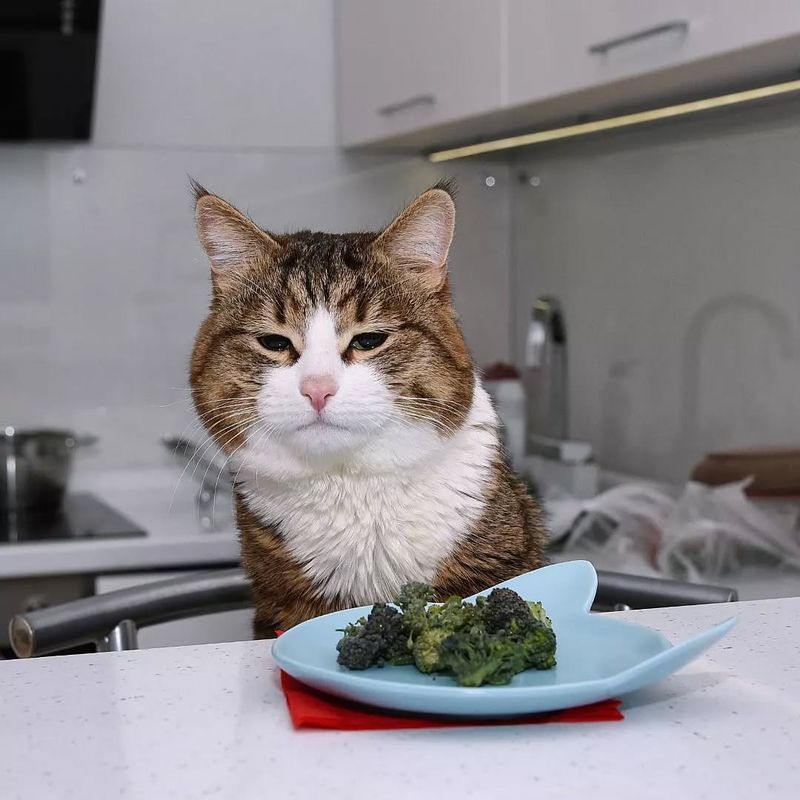📖 Table of Content:
- 1. Cats Have Fewer Taste Buds
- 2. Wild Ancestry Shapes Food Preferences
- 3. Temperature Matters More Than Flavor
- 4. Cats Need Frequent Small Meals
- 5. Texture Sensitivity Drives Preferences
- 6. Neophobia: Fear of New Foods
- 7. Previous Negative Experiences Create Lasting Aversions
- 8. Stress and Environment Affect Appetite
Ever wonder why your cat turns up her nose at perfectly good food while your dog gobbles up anything in sight? This puzzling difference between our furry friends isn’t just about personality.
Cats have evolved as specialized hunters with unique biological needs that make them naturally picky about what goes in their bowl. Let’s explore why cats are such finicky eaters while dogs seem to have endless appetites.
1. Cats Have Fewer Taste Buds
Surprisingly, cats only have about 470 taste buds compared to a dog’s impressive 1,700. Humans top both with around 9,000! This biological difference means cats experience flavors differently than their canine counterparts.
With fewer taste receptors, cats focus primarily on protein-rich foods that satisfy their carnivorous needs. They can’t taste sweetness at all because they lack the genetic coding for sweet taste receptors.
This limited taste palette makes cats extremely sensitive to bitter or sour flavors, often signals of spoilage or poison in the wild. What seems like pickiness is actually an evolutionary survival mechanism helping them avoid potentially dangerous foods.
2. Wild Ancestry Shapes Food Preferences
Unlike dogs, which evolved alongside humans as scavengers, domestic cats descended from solitary hunters. Their ancestor, the African wildcat, specialized in catching small prey like mice and birds.
This hunting heritage programmed cats to prefer fresh meat and be suspicious of unfamiliar foods. When your cat sniffs carefully before eating, she’s following ancient instincts that protected her ancestors from consuming spoiled or dangerous food.
Dogs, meanwhile, evolved as opportunistic eaters, developing digestive systems that handle a wider variety of foods. Their scavenging past explains why your dog might happily devour almost anything while your cat demands freshness and familiarity.
3. Temperature Matters More Than Flavor
Have you noticed your cat’s strange obsession with food temperature? Cats strongly prefer their meals at or near body temperature (around 101°F), mimicking the warmth of fresh prey.
Cold food straight from the refrigerator? Absolutely not! Warming food releases more aroma, making it more appealing to cats who rely heavily on smell when deciding what to eat. This temperature sensitivity explains why your cat might eagerly eat something when it’s first served but ignore the same food once it cools.
Dogs, with their scavenging background, show much less concern about food temperature. Their evolutionary history prepared them to eat whatever they could find, regardless of whether it was warm or cold.
4. Cats Need Frequent Small Meals
A cat’s natural eating pattern involves consuming many small meals throughout the day, sometimes up to 20 times! This grazing behavior matches their wild hunting style, where they’d catch and eat several small prey animals daily.
When forced to eat on a human schedule of just two or three meals, cats often become pickier. Their small stomachs aren’t designed to handle large meals at once, making them more selective about what they’ll consume during those limited feeding times.
Dogs evolved to eat larger, less frequent meals after successful hunts or scavenging opportunities. This fundamental difference explains why your dog empties his bowl immediately while your cat nibbles throughout the day.
5. Texture Sensitivity Drives Preferences
Cats possess highly sensitive whiskers and tongues that make them incredibly aware of food texture. These tactile tools help wild cats determine if prey is fresh and safe to eat.
Many cats develop strong preferences for specific textures—some adore pâtés while others only eat chunks in gravy. This isn’t just stubbornness; it’s their bodies telling them what feels right to eat based on evolutionary programming.
Dogs typically show much less concern about food texture. Their wolf ancestors would tear apart large prey, consuming various textures in a single meal. This adaptability means your dog is far less likely to reject food based on how it feels in their mouth.
6. Neophobia: Fear of New Foods
“Neophobia” might sound like a fancy term, but it simply means fear of new things, and cats have it in spades when it comes to food. This cautious approach protected their ancestors from eating potentially poisonous prey or plants.
When you introduce a new food to your cat, don’t be surprised if she approaches it with extreme suspicion or outright rejection. Many cats need gradual exposure to new foods over days or even weeks before acceptance.
Dogs, as natural scavengers, evolved with less neophobia. Their survival often depended on trying new food sources, explaining why your dog might eagerly sample strange foods while your cat sticks to her familiar favorites.
7. Previous Negative Experiences Create Lasting Aversions
Cats possess a remarkable food memory. One negative experience with a particular food can create a lifelong aversion—even if the bad experience wasn’t directly caused by the food itself!
If your cat felt sick shortly after eating something new, she might forever associate that food with illness. Similarly, if you’ve hidden medicine in her favorite treat, don’t be surprised if she suddenly becomes suspicious of that treat forever.
Dogs certainly remember negative food experiences too, but they generally forgive and forget much faster than cats. This difference explains why medication is typically easier to give to dogs, who are less likely to develop long-term food aversions after a single bad experience.
8. Stress and Environment Affect Appetite
Cats are creatures of habit who thrive on routine and predictability. Even minor household changes—new furniture, houseguests, or schedule disruptions—can trigger stress that manifests as food pickiness.
Location matters tremendously, too. Many cats refuse to eat if their bowl is placed near their litter box, in high-traffic areas, or where they feel vulnerable. They instinctively seek quiet, safe places to eat, just as their ancestors needed security while focusing on their meals.
Dogs, being more socially flexible animals, typically maintain their appetites even during environmental changes. This resilience stems from their pack-oriented evolution, where adaptability to changing circumstances was crucial for survival.








